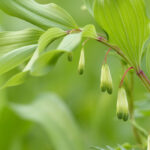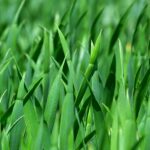Ainesanat – Uncountable Mass Nouns – Finnish Object and Complement
Both when studying the object and the complement (predikatiivi), you will run into the concept of mass nouns (ainesanat).
- What is a mass noun?
- Why are mass nouns important in Finnish?
- Mass nouns as the object of a sentence
- Mass nouns as the subject of a complement sentence
- Types of mass nouns
- Liquids as mass nouns
- Other foods as mass nouns
- Substance nouns
- Product nouns
- Materials
- Word choice is important
- Part of whole – Don’t overuse it!
- Not mass nouns in Finnish!
1. What is a mass noun?
Some nouns are countable, while others can’t be counted. An example of an uncountable mass noun is ketsuppi. While you can count bottles (pullo), you can’t count the ketchup itself. You can of course measure it in liters, but there is no such thing as one ketchup, two ketchups.
Another way to think of it is through the idea of dividability. A mass noun is something that can be divided into multiple parts, yet still remains “the same”. If I cut a piece of fabric in two, I end up with two pieces of fabric. This makes fabric (kangas) a mass noun. In contrast, cutting a dress in two doesn’t give me two dresses.
Likewise, if I combine two glasses of water into a cup, the combination is still water; not “two waters”. In contrast, if I put two pens in a cup, I do end up with two pens.
Tests for mass nouns in English:
- Mass nouns are quantified by an amount rather than a number (2 liters of water vs. 2 pens).
- They have only one form (singular, no “milks”).
- They cannot have “a”, “an”, or “one” before them as modifiers (“one milk”).
2. Why are mass nouns important in Finnish?
This is important in Finnish, because we will use the partitive case with mass nouns. You will see this in both object and complement sentences.
2.1. Mass nouns as the object of a sentence
When a mass noun like “coffee” is the object of a sentence, you will use the partitive case for it. This is because you’re using an undefined amount of it (#1). If you want to define the amount, you will use the container (e.g. a cup, glass) as the object of the sentence. This container will appear in the genitive case because you use the whole container (#2).
| # | Finnish | English |
|---|---|---|
| 1 | Juon kahvia. | I drink coffee. |
| 2 | Juon kupin kahvia. | I drink a cup of coffee. |
| 1 | Otan teetä. | I take tea. |
| 2 | Otan teepussin. | I take a tea bag. |
2.2. Mass nouns as the subject of a complement sentence
In sentences where the subject (e.g. milk) is a mass noun, you will put the complement (e.g. cold) in the partitive case (#1). In this situation it doesn’t matter whether we’re talking about “the milk” or “milk in general”. When the subject is countable (e.g. a milk carton), your complement will appear in the basic form (#2).
| # | Finnish | English |
|---|---|---|
| 1 | Maito on kylmää. | (The) milk is cold. |
| 2 | Maitotölkki on kylmä. | The milk carton is cold. |
| 1 | Hillo on makeaa. | (The) jam is sweet. |
| 2 | Hillopurkki on pyöreä. | The jam jar is round. |
| 1 | Mehu on oranssia. |
(The) juice is orange. |
| 2 | Mehupullo on oranssi. |
The juice bottle is orange. |
3. Types of Mass Nouns
Please note that the example sentences contain the default form used for each word. While this is the partitive case for all of these, there are situations where you could also use a different case. As a learner of Finnish, it’s often enough to be able to produce sentences similar to the examples. However, if you want a full view of what is possible, here’s a link to another article that contains more nuances. I advise against looking at the article until you are comfortable with the default case sentences.
3.1. Liquids as mass nouns
The most obvious group of mass nouns are of course the various liquids that exist. Some of these are very runny (e.g. maito “milk”), while others are less so (e.g. jogurtti “yoghurt”). In most situations, you will use the partitive form of these nouns in object sentences.
Please note that the example sentences contain the default form used for each word. While this is the partitive case for all of these, there are situations where you could also use a different case.
| Finnish | English | Object sentence + Complement sentence |
|---|---|---|
| kahvi | coffee | Juon kahvia. Kahvi on kuumaa. |
| limsa | lemonade | Ostan limsaa. Limsa on makeaa. |
| maito | milk | Haluan maitoa. Maito on terveellistä. |
| mehu | juice | Join mehua. Mehu on hapanta. |
| tee | tea | Juotko teetä? Tee on hyvää. |
| kaakao | cocoa | Haluan kaakaota. Kaakao on kuumaa. |
| olut | beer | Ostan olutta. Olut on kylmää. |
| vesi | water | Juon vettä. Vesi on raikasta. |
| öljy | oil | Tarvitsen öljyä. Öljy on tärkeää. |
| alkoholi | alcohol | Haluan alkoholia. Alkoholi on kallista. |
| likööri | liquor | Ostan likööriä. Likööri on makeaa. |
| viski | whiskey | Juon viskiä. Viski on pahaa. |
| neste | liquid | Tarvitset nestettä. Neste on kirkasta. |
| pesuaine | detergent | Ostan pesuainetta. Pesuaine on vihreää. |
| polttoaine | fuel | Tarvitsen polttoainetta. Polttoaine on tärkeää. |
| bensiini | petrol, gas | Tankkaan bensiiniä. Bensiini on kallista. |
| valkaisuaine | bleach | Ostan valkaisuainetta. Valkaisuaine on tehokasta. |
| puhdistusaine | cleaner | Ostan puhdistusainetta. Puhdistusaine on vahvaa. |
| väriaine | dye | Tarvitsen väriainetta. Väriaine oli kallista. |
| muste | ink | Otan mustetta. Muste on mustaa. |
| maali | paint | Ostan maalia. Maali on ruskeaa. |
| mahla | sap | Juon mahlaa. Mahla on juoksevaa. |
| melassi | molasses | Lisää veteen melassia. Melassi on paksua. |
| terva | tar | Tarvitsen tervaa. Terva on mustaa. |
| liemi | stock | Juon lientä. Liemi on suolaista. |
| liima | glue | Ostan liimaa. Liima on tahmeaa. |
3.2. Other foods as mass nouns
Many mass nouns are liquid foods, but there are also plenty of other foods that fall under the category. What matters when you’re considering if a noun is a mass noun is that – if you divide it in pieces – each piece is still whatever the mass noun is. Puuro “porrige” is still porridge when you take a spoonful of the stuff.
| Finnish | English | Object sentence + Complement sentence |
|---|---|---|
| voi | butter | Laitan voita pannuun. Voi on sulaa. |
| margariini | margarine | Ostan margariina. Margariini on halpaa. |
| hunaja | honey | Otan hunajaa. Hunaja on makeaa. |
| siirappi | syrup | Ostan siirappia. Siirappi on tummaa. |
| kookosmaito | coconut milk | Haluan kookosmaitoa. Kookosmaito on hyvää. |
| kerma | cream | Ostan kermaa. Kerma on kallista. |
| jogurtti | yoghurt | Syön jogurttia. Jogurtti on maustamatonta. |
| sinappi | mustard | Otan sinappia. Sinappi on mietoa. |
| majoneesi | mayonnaise | Ostan majoneesia. Majoneesi on paksua. |
| ketsuppi | ketchup | Haluan ketsuppia. Ketsuppi on terveellisempää. |
| etikka | vinegar | Tarvitsen etikkaa. Etikka on hapanta. |
| hillo | jam | Syön hilloa. Hillo on makeaa. |
| keitto | soup | Syön keittoa. Keitto on herkullista. |
| riisi | rice | Syön riisiä. Riisi on terveellistä. |
| juusto | cheese | Tarvitsen juustoa. Juusto on rasvaista. |
| puuro | porridge | Syön puuroa. Puuro on paksua. |
| spaghetti | spaghetti | Söin spaghettia. Spaghetti oli huonoa. |
| pasta | pasta | Syön pastaa. Pasta on herkullista. |
| jäätelö | ice cream | Ostan jäätelöä. Jäätelö on kallista. |
| toffee | taffy | Haluan toffeeta. Toffee oli pehmeää. |
| kinuski | butterscotch | Haluan kinuskia. Kinuski on makeaa. |
| marsipaani | marzipan | Syön marsipaania. Marsipaani on hyvää. |
| sokeri | sugar | Tarvitsen sokeria. Sokeri on myrkyllistä. |
| suola | salt | Ostan suolaa. Suola on epäterveellistä. |
| jauhe | powder | Tarvitsen jauhetta. Jauhe on hienoa. |
3.3. Substance Nouns
The following nouns refer to a substance. These are another interesting group because they don’t fit into the general pattern of countable versus uncountable nouns.
Things like dust, blood and sweat are definitely mass nouns. However, you’re generally wiping away the sweat, not just some sweat. This makes “the sweat” a total object; and object sentences require the genitive case.
Many of these substances are not the type of things you generally use with normal object verbs such as ostaa “to buy”, avata “to open”, ottaa “to take” or tarvita “to need”. If they were, we would theoretically use the partitive case: Ostan limaa “I buy mucus”, which would follow the general rule. Where possible, I have given an example of the partitive.
| Finnish | English | Example |
|---|---|---|
| rasva | grease | Pyyhin rasvan pois. Rasva on kiiltävää. |
| lika | dirt | Poistan lian. Lika on sitkeää. |
| hiki | sweat | Pyyhin hien otsaltani. Hiki on kylmää. |
| lima | mucus | Pyyhin liman pois. Lima on vihreää. |
| räkä | snot | Pyyhin rään nenästä. Räkä on ällöttävää. |
| sylki | saliva | Pyyhin syljen pois. Sylki on paksua. |
| muta | mud | Pyyhin mudan saappaista. Muta oli pehmeää. |
| kura | mud | Pyyhin kuran pois. Kura oli kosteaa. |
| oksennus | vomit | Löysin oksennusta. Oksennus on vihreää. |
| veri | blood | Löysin verta sohvalta. Veri on punaista. |
| ruoste | rust | Löysin ruostetta katossa. Ruoste on ruskeaa. |
| home | mold, mildew | Löysin hometta kellarista. Home oli vihreää. |
| hiekka | sand | Tarvitsen hiekkaa. Hiekka on hienoa. |
| ruoho | grass | Kissa syö ruohoa. Ruoho on vihreää. |
| lumi | snow | Syön lunta. Lumi on valkoista. |
| sade | rain | Katsoin sadetta. Sade on märkää. |
| kaasu | gas | Haistan kaasua. Kaasu (polttoaine) oli halpaa. |
| happi | oxygen | Tarvitsen happea. Happi on välttämätöntä. |
| höyry | steam, vapor | Hengitin höyryä. Höyry on kuumaa. |
| löyly | steam | Heitin löylyä. Löyly oli kuumaa. |
3.4. Product Nouns
The following is a special group of words that tend to diverge from the main rule, but for understandable reasons. All of these words are uncountable mass nouns. As such, you will say “I take medication, I buy perfume and I apply nail polish” using the partitive case for the object.
However, when describing what these substances are like, we typically use the basic form for the complement; not the partitive. You’re more likely to say that the perfume you bought was expensive than that perfume in general is expensive. However, while this seems logical, it makes these words different from – for example – coffee. For coffee, you will use the partitive case no matter if it’s a specific coffee or not.
| Finnish | English | Example |
|---|---|---|
| lääke | medicine | Otan lääkettä. Lääke on kallis. |
| käsivoide | cream, salve | Ostin käsivoidetta. Käsivoide on hajusteeton. |
| hajuvesi | perfume | Ostin hajuvettä. Hajuvesi oli kallis. |
| hiuslakka | hair spray | Ostin hiuslakkaa. Hiuslakka oli hajusteeton. |
| kynsilakka | nail polish | Ostin kynsilakkaa. Kynsilakka oli punainen. |
| deodorantti | deodorant | Ostin deodoranttia. Deodorantti on liian tahmea. |
| aurinkovoide | sun screen | Ostin aurinkovoidetta. Aurinkovoide on vedenkestävä. |
| saippua | soap | Ostin saippuaa. Saippua on hyväntuoksuinen. |
Note how suuvesi “mouth water” does have a partitive complement: Suuvesi on karvasta. This difference seems to be due to the fact that you take larger amounts of mouth water than you would of perfume. Perhaps this makes it more like “coffee”?
3.5. Materials
Another group of mass nouns are materials: e.g. wood, plastic, aluminum. For these words, I’m not offering an object sentence like in the previous sections. Situations where you’ll for example buy raw metal, silicon or plastic are rare. Much more interesting are the complement sentences.
In Finnish, you can make two types of complement sentences with materials. Below, you will find an example of both types of complement sentences for each noun.
- Firstly, you can describe what the material is like (e.g. “paper is thick” or “gold is soft”). In these sentences, the material will be the subject of your complement sentence. The adjective describing it will be in its partitive form.
- Secondly, you can describe that something is made out of the material. In these cases, the subject will be a concrete noun, while the complement is the material in its partitive form. This is for many learners of Finnish the more difficult, because English does not have a similar sentence construction. For example, the sentence tuoli on muovia will require you to use the words “is made of” in English.
Note how the first words in this list can also be used as regular nouns (glass vs. a glass). The examples provided are sentences about the material.
| Finnish | English | Two types of complement sentence |
|---|---|---|
| lasi | glass | Lasi on haurasta. Maljakko on lasia. |
| paperi | paper | Paperi on paksua. Raha on paperia. |
| kipsi | plaster | Kipsi on valkoista. Muotti on kipsiä. |
| puu | wood | Puu on tummaa. Pöytä on puuta. |
| muovi | plastic | Muovi on kovaa. Tuoli on muovia. |
| kumi | rubber | Kumi on joustavaa. Saappaat ovat kumia. |
| silikoni | silicone | Silikoni on kestävää. Tutti on silikonia. |
| bambu | bamboo | Bambu on ekologista. Kahva on bambua. |
| laminaatti | laminate | Laminaatti on kestävää. Lattia on laminaattia. |
| vinyyli | vinyl | Vinyyli on halpaa. Lattia on vinyyliä. |
| betoni | concrete | Betoni on edullista. Lattia on betonia. |
| metalli | metal | Metalli on lujaa. Rikkalapio on metallia. |
| teräs | steel | Teräs on kovaa. Miekka on terästä. |
| kupari | copper | Kupari on myrkyllistä. Kuori on kuparia. |
| hopea | silver | Hopea on kovempaa. Sormus on hopeaa. |
| kulta | gold | Kulta on pehmeää. Sormus on kultaa. |
| alumiini | aluminum | Alumiini on kevyttä. Oluttölkki on alumiinia. |
| asetoni | acetone | Asetoni on vaarallista. Poistoaine on asetonia. |
| tina | tin | Tina on vaarallista. Kulho on tinaa. |
| savi | clay | Savi on haurasta. Lattia on savea. |
| kivi | stone | Kivi on haurasta. Ulkoseinä on kiveä. |
| kangas | fabric | Kangas on kestävää. Verho on kangasta. |
| sametti | velvet | Sametti on pehmeää. Matto on samettia. |
| nahka | leather | Nahka on kallista. Takki on nahkaa. |
| pellava | linen | Pellava on lämmintä. Pyyhe on pellavaa. |
| puuvilla | cotton | Puuvilla on valkoista. Lakana on puuvillaa. |
| villa | wool | Villa on lämmintä. Sukat ovat villaa. |
| polyesteri | polyester | Polyesteri on kestävää. Teltta on polyesteria. |
| lateksi | latex | Lateksi on joustavaa. Pinta on lateksia. |
| silkki | silk | Silkki on kevyttä. Lakanat ovat silkkiä. |
4. Word choice is important
Sometimes there are several concrete, countable nouns that you can use in addition to the mass noun. Depending on the situation, you might want to diverge from calling all food ruokaa and use a different noun instead. Especially as your Finnish improves, it’s important to branch out and utilise a more varied vocabulary.
| Finnish | English | Object sentence + Complement sentence |
|---|---|---|
| ruoka | food | Söin hyvää ruokaa. Ruoka on valmista. |
| annos | portion | Söin ison annoksen. Annos oli iso. |
| ateria | meal | Söin hyvän aterian. Ateria oli herkullinen. |
| aamupala | breakfast | Söin aamupalan. Aamupala oli terveellinen. |
| iltapala | evening snack | Söin iltapalan. Iltapala on epäterveellinen. |
| päivällinen | dinner | Söin päivällisen. Päivällinen oli lämmin. |
| illallinen | supper | Söin illallisen. Illallinen oli kylmä. |
| välipala | snack | Söin välipalan. Välipala oli liian pieni. |
| liha | meat | Ostan lihaa. Liha on kallista. |
| pihvi | steak | Ostan pihvin. Pihvi on kallis. |
| kyljys | cutlet, chop | Söin kyljyksen. Kyljys oli mehukas. |
| kala | fish | Ostan kalaa. Kala on tuoretta. |
| kalafilee | fish fillet | Ostin kalafileen. Filee oli tuore. |
| kalapuikko | fish finger | Söin kalapuikon. Kalapuikko oli hyvä. |
| leipä | bread | Söin leipää. Leipä oli tuoretta. |
| voileipä | sandwich | Söin voileivän. Voileipä oli tuore. |
| sämpylä | bun | Söin sämpylän. Sämpylä oli hyvä. |
| suklaa | chocolate | Söin suklaata. Suklaa on makeaa. |
| suklaapatukka | chocolate bar | Söin suklaapatukan. Suklaapatukka oli hyvä. |
| suklaalevy | chocolate slab | Ostin suklaalevyn. Suklaalevy oli iso. |
| suklaapala | piece of chocolate | Söin suklaapalan. Suklaapala oli makea. |
5. Part or Whole – Don’t overuse it!
There are a few nouns that can be used both as concrete nouns and as mass nouns. I eat some cake (mass noun), but I buy the cake (countable noun). Sausage and bread can also be eaten both as a whole and in part.
| Finnish | English | Object sentence + Complement sentence |
|---|---|---|
| makkara | sausage | Söin makkaraa. Makkara oli hyvää. |
| makkara | sausage | Söin makkaran. Makkara oli halpa. |
| kakku | cake | Söin kakkua. Kakku oli herkullista. |
| kakku | cake | Ostin kakun. Kakku oli pieni. |
| leipä | bread | Haluan leipää. Leipä on tuoretta. |
| leipä | bread | Ostan leivän. Leipä on pyöreä. |
The tricky thing for you as a language learner is to know which nouns can be used like the words above and which ones can’t. For example, as said before, chocolate will be used with the partitive case.
A flexible mind could consider it both as a mass noun and a countable noun. However, this is generally not the case in Finnish: chocolate will not be used as a countable noun like the words in the table below. At least not normally. We will use suklaalevy or another similar countable noun in that case.
6. Not Mass Nouns in Finnish!
Last but not least, not all words that are mass nouns in English are automatically mass nouns in Finnish. For most of these, you will simply use a plural term.
For example, when English says “I will buy furniture”, the word furniture is a mass noun. In Finnish, the same phrase will generally be “Ostan huonekaluja” (I buy pieces of furniture). The word kalusto is a singular noun which you could see as the Finnish equivalent of “furniture”. However, the word kalusto doesn’t refer to any single piece of furniture, it’s always the collection.
| English | Plurals | Singular |
|---|---|---|
| equipment | laitteet, välineet, varusteet | välineistö, varustus |
| furniture | kalusteet, huonekalut | kalusto |
| luggage, baggage | matkatavarat | pakaasi |
| trash, garbage | roskat, jätteet | − |
| hair | hiukset | tukka |
| fruit | hedelmät | − |
| silverware | pöytähopeat, hopeat | − |
| cutlery | ruokailuvälineet, aterimet | − |
| housework | kotityöt, kotiaskareet | − |
There are also nouns that are plural in both Finnish and English, but which are from a linguistic point of view not comparable. For example, sää “weather” could be seen as a mass noun, but it’s in fact not, as you can see from the example complement sentence.
| Finnish | English | Singular |
|---|---|---|
| sää | weather | Sää on hyvä. Sää on pilvinen. |
| taivas | sky | Taivas on sininen. Taivas on kaunis. |
| avaruus | space | Avaruus on ääretön. Avaruus on pimeä. |
| ilmasto | climate | Ilmasto on kylmä. Ilmasto on uhattu. |
Please also check out this!
The object and complement of mass nouns have more complications than this article shows. Learn more! Complications with Finnish Mass Nouns – Object and Complement
Read more elsewhere
- Ask A Finnish Teacher: How do I tell if a word is an “ainesana“
- VISK: Jaolliset substantiivit: vesi, musiikki, rakkaus, juokseminen
This article doesn’t contain abstract nouns, which are the other important type of words that you need in order to make correct object and complement sentences. You can read more about abstract nouns in object sentences here.





It’s not an ainesana, no! Lounas belongs in the same category as aamupala “breakfast”, päivällinen “dinner”, illallinen “supper” and välipala “snack” (see section 4 on this page).
what is the difference between syön lounan and syön lounasta
Using “lounaan” means a specific lunch, today’s lunch. You eat or ate all of it.
Using “lounasta” is just unspecific “lunch”, you could talk about when you eat lunch every day. In addition, the partitive is also used when you are currently eating the lunch.
Is it so that must of the Mass noun does not have Partitive plural and T-Plural form since it is uncountable
Well, you won’t need them very often, but they do have their use.
Take sinappi (mustard) for example:
Hi, in this sentence “Banaani on kypsä”. Is “kypsä” in nominative case due to it belonging to the same category as “sämpylä” (section 4) – Söin sämpylän. Sämpylä oli hyvä ?
Thank you!
Yep!